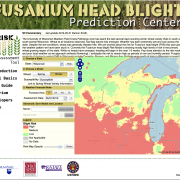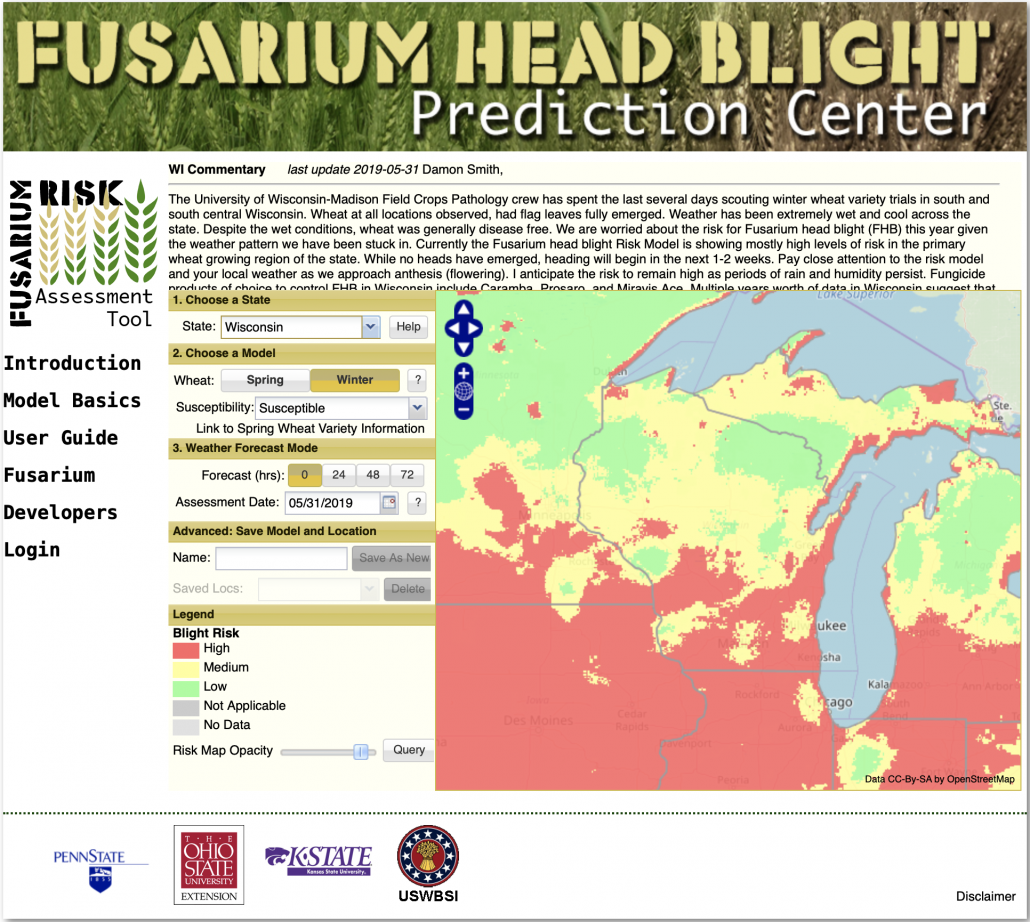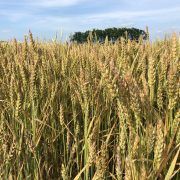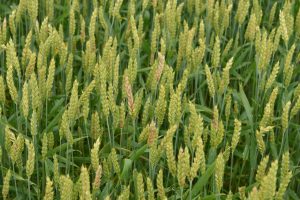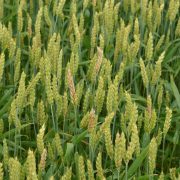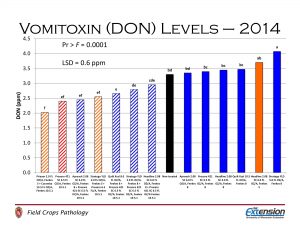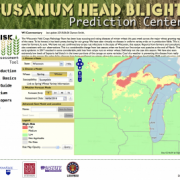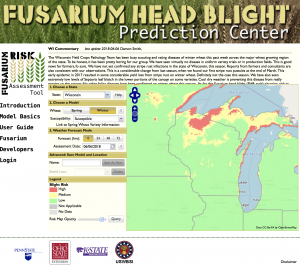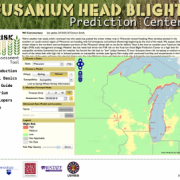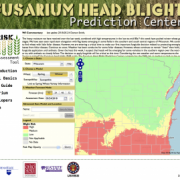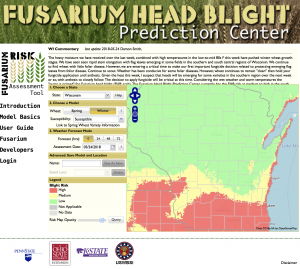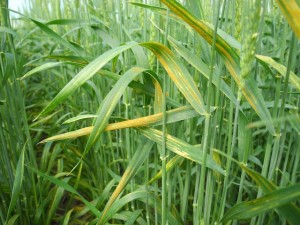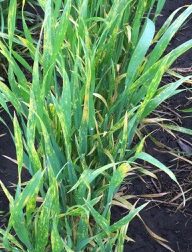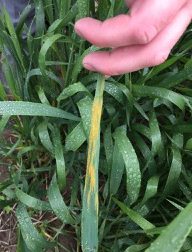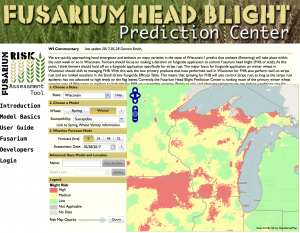Wisconsin Winter Wheat Disease Update – June 4, 2019
Damon Smith, Extension Field Crops Pathologist, Department of Plant Pathology, University of Wisconsin-Madison
Brian Mueller, Assistant Field Researcher, Department of Plant Pathology, University of Wisconsin-Madison
Wheat heads are close to emergence on some earlier varieties of winter wheat in southern and south-central Wisconsin. Within the next week wheat heads will be emerging and anthesis (flowering) will be starting, with later varieties to follow. Now is the time to prepare for Fusarium head blight (FHB or scab) management. The Fusarium head blight Risk Model (http://www.wheatscab.psu.edu) is showing moderate to high levels of risk in the primary wheat growing region of the state over the next 72 hours (Figure 1). Pay close attention to the risk model and your local weather as we approach anthesis (flowering). I anticipate the risk to remain high as periods of rain and humidity persist. Fungicide products of choice to control FHB in Wisconsin include Caramba, Prosaro, and Miravis Ace. Multiple years of data in Wisconsin suggest that the best application window for any of these products begins at the start of anthesis until 5-7 days after the start of anthesis. Applying fungicide before anthesis or more than 7-10 days after anthesis will result in poor performance against vomitoxin accumulation. For information pertaining to recent fungicide studies on winter wheat in Wisconsin, CLICK HERE and scroll to page 12. Other reports can be found by CLICKING HERE.

Figure 1. Fusarium Head Blight Prediction Center 72-hour Outlook for Wisconsin.


